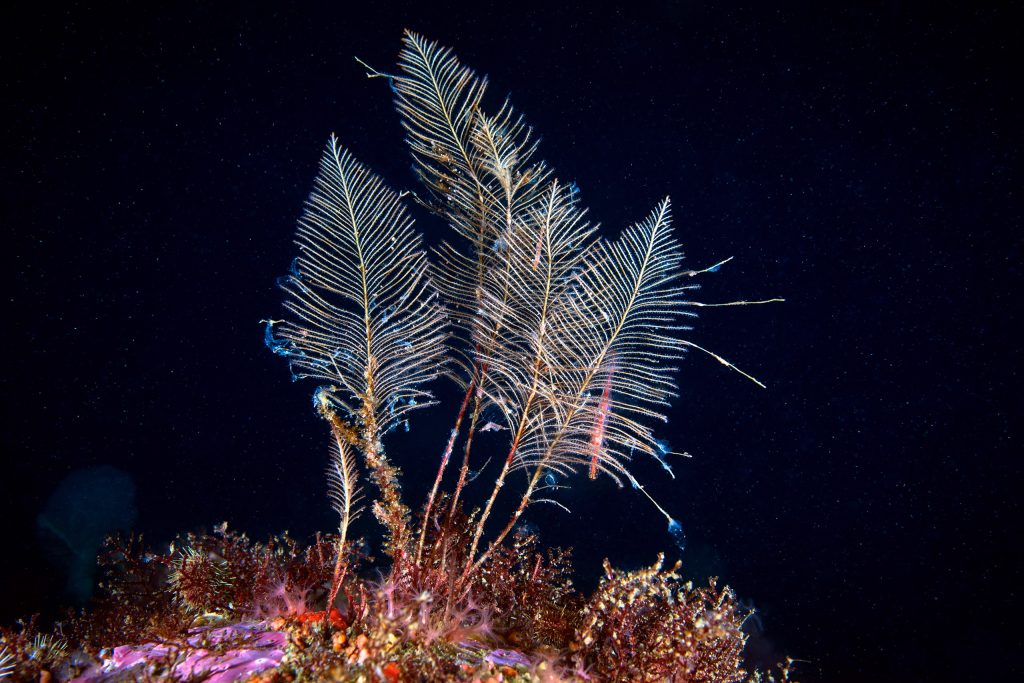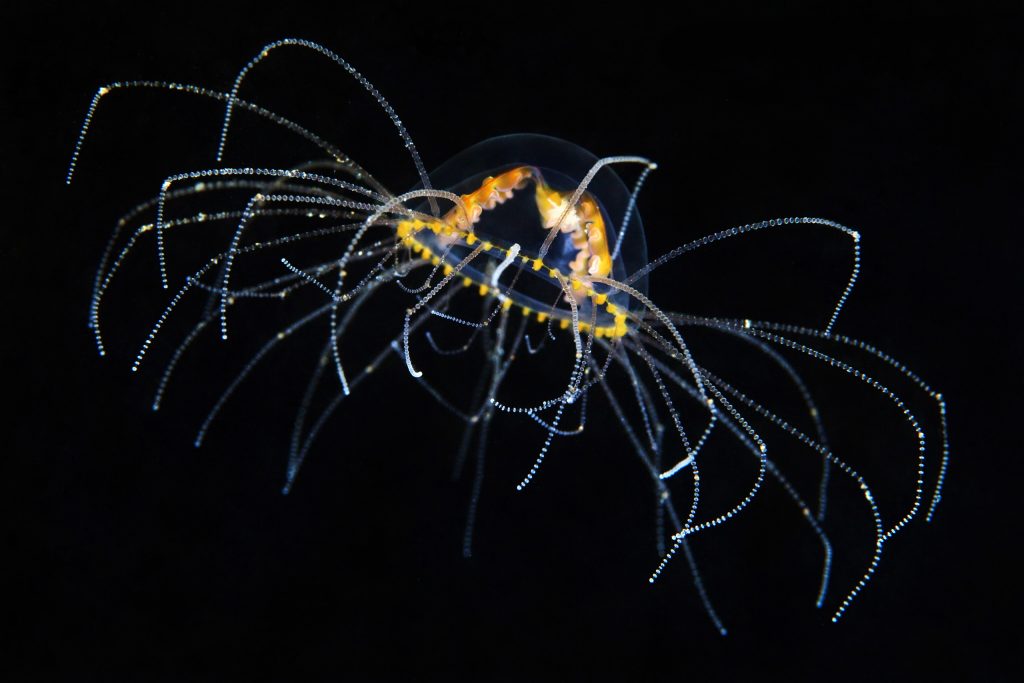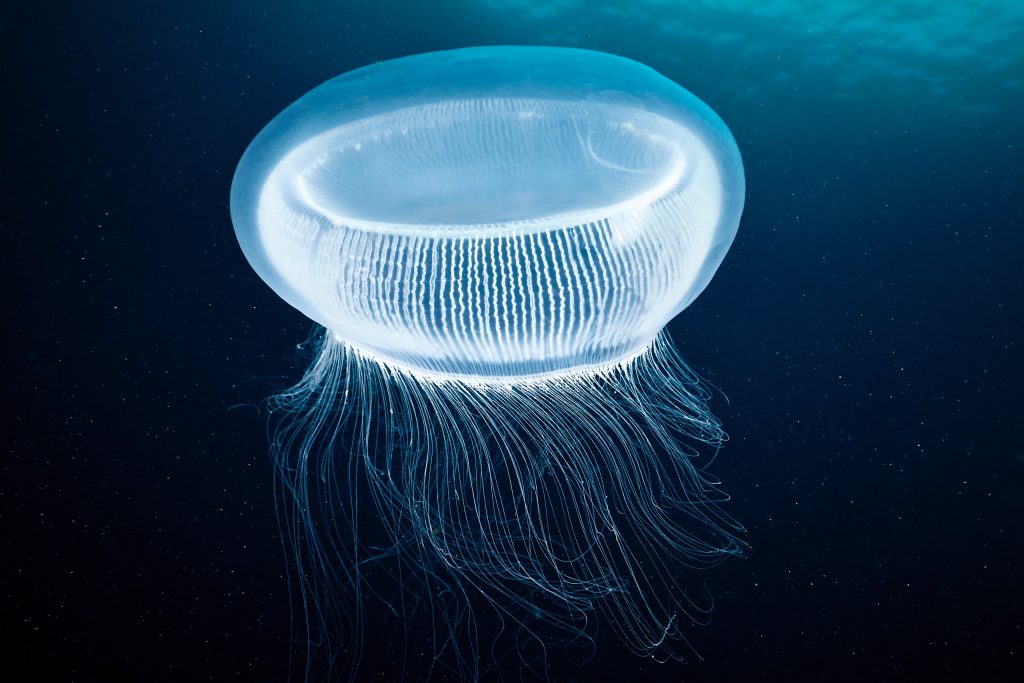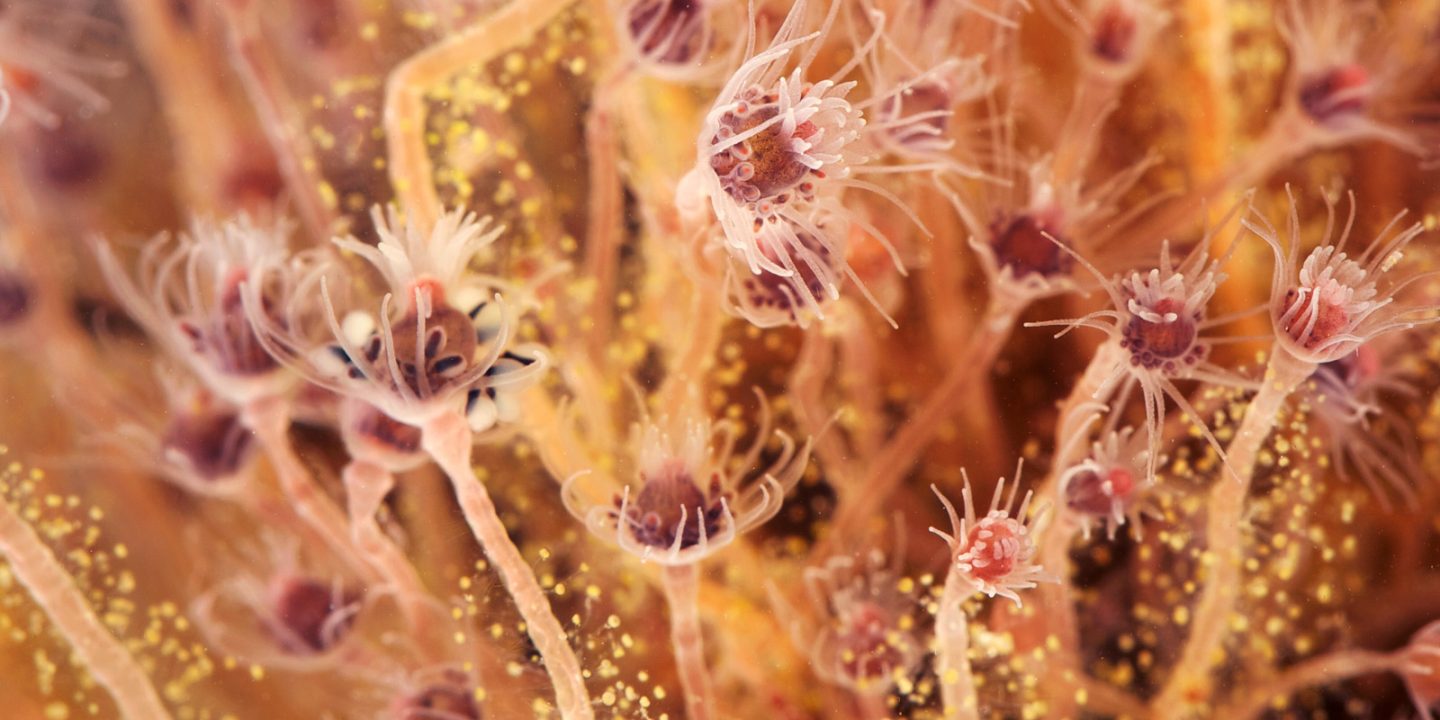This month at the blog, we wish to present Hydroza, which is a class found within phylum Cnidaria. This lesser-known taxa is perhaps more known than thought, as well-known species like Portuguese man-o-wars (Physalia physalis), the freshwater genus Hydra, fire coral (Milleporidae), and by-the-wind sailors (Velella velella). Also, in Haeckels famous drawings are Hydrozoa well represented with beautiful depictions.

Diversity
As mentioned, Hydrozoa is a class within order Cnidaria and about 3700 speices are known. It is a diverse class containing a variety of life cycles, growth forms and specialized structures. Hydrozoans have, like many other cnidarians, both a polyp stage and a medusa stage in their life cycle. However, they are distinguished from other groups by their complex life cycle, by the growth of medusae from buds rather than strobilae or from metamorphosis, by the presence of a velum inside the bell of the medusa, and by the production of gametes from ectodermal, rather than endodermal, tissue.
Hydrozoans usually forms colonies of asexual polyps and free-swimming sexual medusae. The colonies, they are usually benthic, but some, especially the siphonophores, are pelagic floaters. In the colony, there are polyps that are differentiated with special tasks; some polyps are specialized for defense, some for feeding and some for production (similar polymorphisms like for instance bryozoans).

Habitat and feeding
The majority of hydrozans are marine and they are found in all oceans and at all latitudes, and actually a few species also occur in fresh and brackish water on all continents except Antarctica. However, they are most abundant and diverse in warm, shallow waters, probably as a reflection of food abundance. The small number of freshwater species occur in both lotic and lentic habitats, and are more abundant in eutrophic and mesotrophic waters. (Bouillon, et al., 2006; Jankowski, et al., 2008).
While hydrozoans vary in their feeding strategy, most hydrozoans are predators or filter-feeders, and a few have symbiotic algae (zooxanthellae), in the same way that other other groups of cnidarians do. Pelagic hydrozoans, including siphonophore colonies and medusae, are known to show some selectivity in prey types, some taking mainly fish larvae, others taking soft-bodied invertebrates, others micro-crustaceans.

Life cycle and reproduction
As mentioned, hydrozoa have a complex life cycle with a variety of different growth forms, and the life cycle usually have two or three different morphological stages. Most hydrozoans are broadcast spawners, and the classic cycle starts with fertilized eggs developing into small, free swimming larvae called planulae, which may be able to enter a dormant resting state to resist unsuitable environmental conditions. Then, the planulae transform into sessile polyps, usually attached to substrate, but free-floating in some groups. Polyps duplicate themselves asexually by budding, often producing colonies of hundreds or thousands of polymorphic individual polyps. As such, the whole colony can be understood as a single organism sharing the same genetic material. Then, the polyps produce “adult” sexually-reproducing medusae by budding. Medusae are solitary, free-swimming, dieocious. They release sperm and eggs into the water, where fertilization occurs. This is the basic cycle, but there is an enormous range of variations. In nearly half of species (e.g. Hydra) the the medusa stage is entirely suppressed; polyps produce gametes directly. In others the medusa are formed, but never detach from the parent polyp, and produce gametes while still attached. In some cases these fused combinations form elaborate structures. In other taxa the polyp stage is suppressed, and planulae transform directly into tiny medusae, or form a polyp, produce a medusa, and resorb the polyp. Numerous taxa have suppressed the planula as well. (Bouillon, et al., 2006; Brusca and Brusca, 2003).


Systematics
The class is divided into two subclasses:
Subclass Hydroidolina
- Order Anthoathecata
- Order Leptothecata
- Order Siphonophorae
Subclass Trachylinae
- Order Actinulidae
- Order Limnomedusae
- Order Narcomedusae
- Order Trachymedusae
References
Bouillon, J., C. Gravili, F. Pagès, J. Gili, F. Boero. 2006. An Introduction to Hydrozoa. Paris, France: Publications Scientifiques du Muséum.
Brusca, R., G. Brusca. 2003. Invertebrates. Sunderland, Massachusetts, USA: Sinauer Associates, Inc..
![]()
